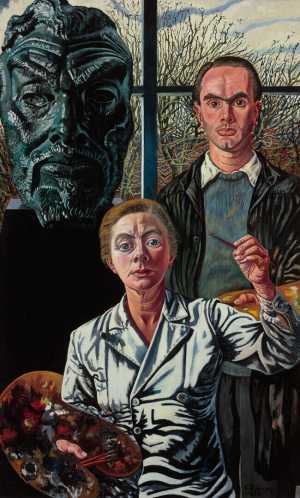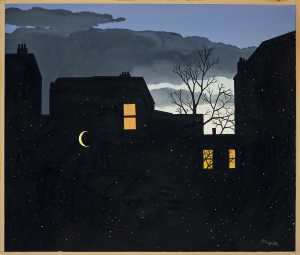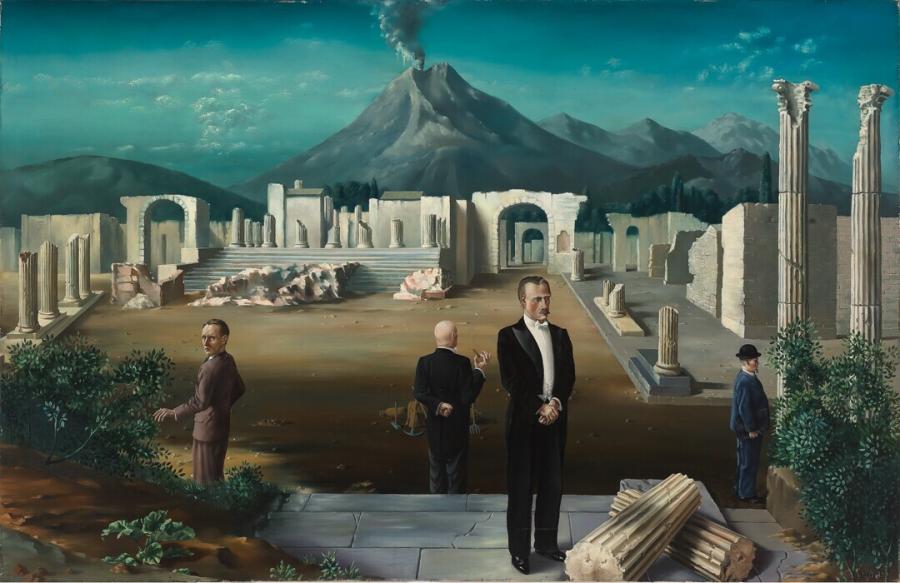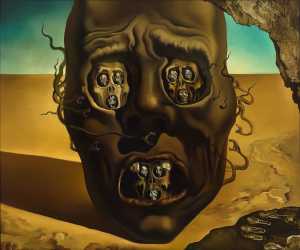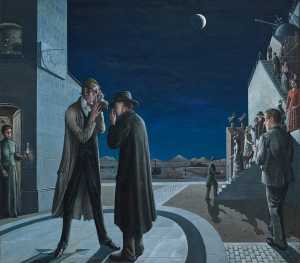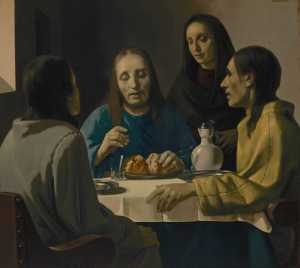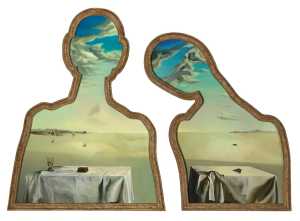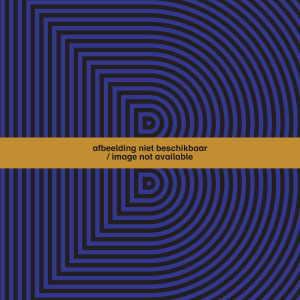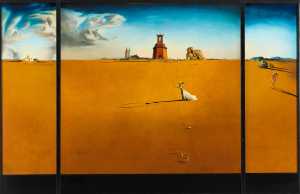This painting was acquired by the museum just two years after it was completed. This shows that Willink was recognised as an important artist very quickly. In comparison with his later illusionistic virtuosity, this painting is fairly crude. However, the alienating effect is very successful. Willink has depicted himself on the left, turning to face the viewer.

Specifications
| Title | Late Visitors to Pompeii |
|---|---|
| Material and technique | Oil on canvas |
| Object type |
Painting
> Painting
> Two-dimensional object
> Art object
|
| Location | This object is in storage |
| Dimensions |
Width 142 cm Height 92 cm |
|---|---|
| Artists |
Artist:
Carel Willink
|
| Accession number | 2005 (MK) |
| Credits | Gift Academiefonds, 1933 |
| Department | Modern Art |
| Acquisition date | 1933 |
| Creation date | in 1931 |
| Entitled parties | © Mrs. Sylvia Willink, c/o Pictoright Amsterdam 2018 |
| Internal exhibitions |
Carel Willink (2000) Schilderijen A.C. Willink (1939) Het voorbeeld van de klassieken (1984) The Collection Enriched (2011) De collectie als tijdmachine (2017) |
| External exhibitions |
In de schaduw van morgen. (2012) Dalí, Magritte, Man Ray and Surrealism. Highlights from Museum Boijmans Van Beuningen (2023) Only the Marvelous is Beautiful (2022) A Surreal Shock. Masterpieces from Museum Boijmans Van Beuningen (2023) Dal nulla al sogno (2018) A Surreal Shock – Masterpieces from Museum Boijmans Van Beuningen (2021) Surrealist Art - Masterpieces from Museum Boijmans Van Beuningen (2021) |
| Research |
Show research A dream collection - Surrealism in Museum Boijmans Van Beuningen |
| Material | |
| Object | |
| Place of manufacture | Amsterdam > North Holland > The Netherlands > Western Europe > Europe |
| Geographical origin | The Netherlands > Western Europe > Europe |




